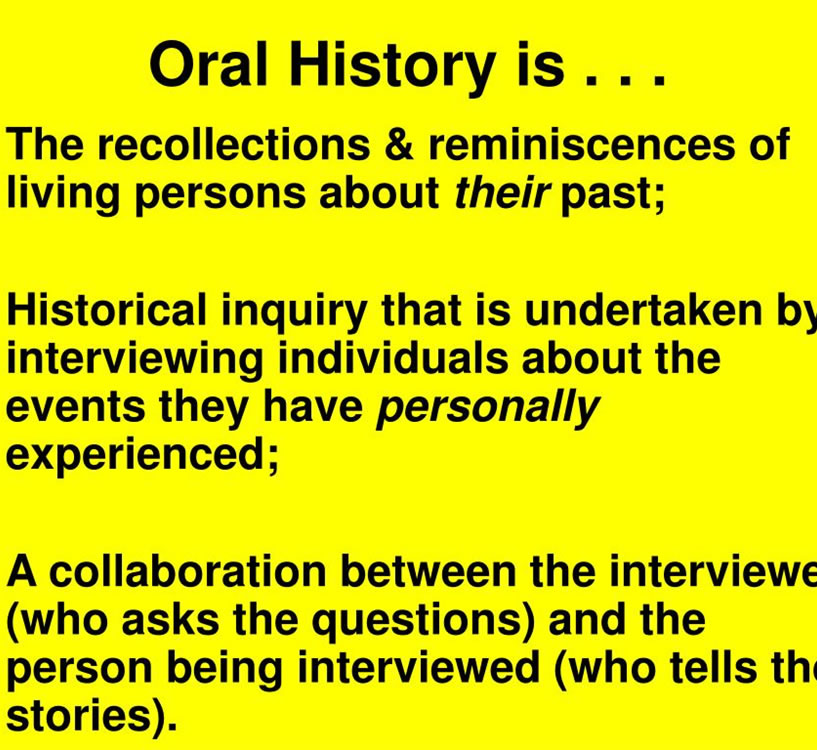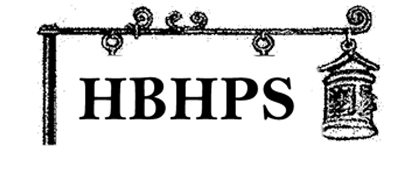 Seeing as it it American Archives Month, we last regaled you with some of our intriguing artifacts. We do hope you enjoyed viewing some of the three-dimensional items from our archives. This week we thought we’d showcase something a bit different. Oral Histories.
Seeing as it it American Archives Month, we last regaled you with some of our intriguing artifacts. We do hope you enjoyed viewing some of the three-dimensional items from our archives. This week we thought we’d showcase something a bit different. Oral Histories.
After Abraham Lincoln’s death, his law partner, William Herndon, and his secretary, John G. Nicolay, set about gathering as much information on the President as they could. They spoke to a wide variety of people who dealt with the President to help preserve the memories of Lincoln and his personality, as well as their experiences. What a treasure trove that would be. That, in fact, was a type of oral history.
So what exactly is an Oral History? You will find that there are more than a few opinions, but the basics are the same: people speaking about their lives. You can buy an oral history guide and it will ask basic questions, many of them of a genealogical bent – parents, grandparents, places of birth etc. That is very helpful to genealogists, but all very name, rank, and serial number.
To get a better feel for how life actually was, we have found that doing a small group of individuals at a time is often beneficial. Much easier to talk about the past when someone isn’t pointing a camera at you alone and hanging on your every word. Plus friends help jog your memories about things that took place in the past. (Fresh baked cookies also go a long way!)
One oral history spoke about how long a ride it was from Riverhead to Good Ground through the wilderness. Another mentions a duck farm in Ponquogue that few have any memory of. There are many memories of a well loved principal, and his memories of those students.
We have quite a few Oral Histories in a variety of mediums. We have them saved on cassette tape, video tapes, transferred from phones and, of course, written. (Yes, so it is a written history, but it was spoken to the author.) We have old ledgers and journals which provide a look back at daily life in our area. The goal would be to someday have them easily viewed. Changing technology is a challenge – as, of course, is money for production – to produce something that would be enjoyable to watch.
The most common answer when someone is asked “would you like to do an oral history” is, “ME? I have nothing to say.” Funnily enough, we completely understand this school of thought. Surely nothing happened in our 30 years of life (umm, okay, so not 30, and how did that happen?) that is of interest to anyone.
Well that just couldn’t possibly be true. One may think their memories aren’t worthwhile, but whether it is comments on clothing, memories of a loved one or entertaining us about school antics, it is all history, even if it is anecdotal. A view of what your street looked like as a child, will often jog memories of who your neighbors were and how they lived their lives.
On that last bit, think of the historical treasure trove today that is Google Street View. These days, you can look at a Google Map of just about anyplace in this country, except a few extremely rural places, grab and drop the little yellow figure on one of the blue street lines, and you are instantly transported to that location, able to spin around, go up the street, read the signs (when they haven’t been intentionally blurred), look at the pedestrians walking by (same notation), and just get a feel for the location. Fantastic as that is, they have been gathering these views for over a decade now, in increasing video quality.
The upshot is, children today are going to be able to go back to their old neighborhoods and see how things were, in glorious three dimensions, almost, and show it to their own children and grandchildren (“Yeah, Grandad, I know, none of the cars were electric – you’ve told us a thousand times”). They will be able to parse through the years and see the pizza parlor become a phone store, then a nail salon, then a real estate office, and then a pizza parlor – a kind of time machine at their fingertips.
In a similar vein, we have one written history in our files that describes the buildings on Main Street in the mid-1800s. Another one describes buildings on the same street, but about a century later. There are probably more. The way our predecessors moved buildings around, like they were playing life-sized Monopoly, these little time trips could get very confusing.
Perhaps we should be working on one for Main Street now, in 2019, but somehow the buildings don’t seem to carry the same interest that they once did, perhaps because so many of the owners are unknown. Back then, the majority of owners were locals, well known to the authors, while today many are absentee landlords from up the island or out of state.
Or perhaps we need to figure out how to cram more than 24 hours into our day in order to get it all done.
Basically, there are no hard and fast rules. Get your loved ones, neighbors, friends or even enemies to talk about their lives, and you will have an oral history. Someone will someday thank you for it. Probably.

